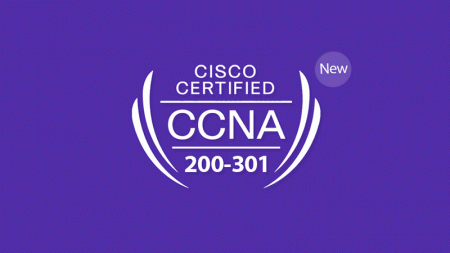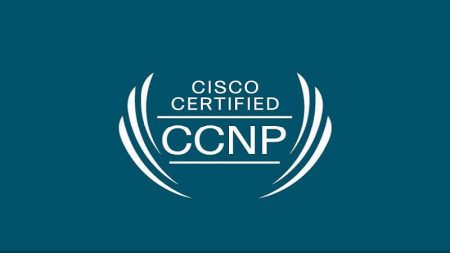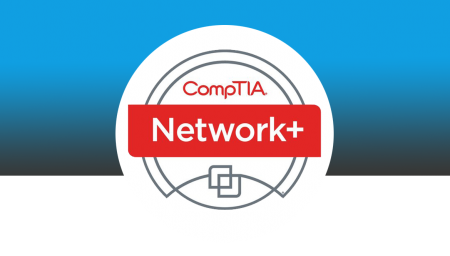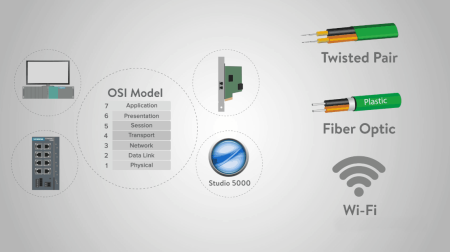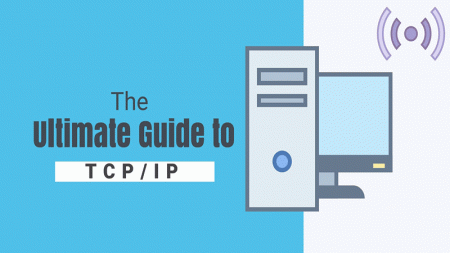معرفی دورههای آموزشی سیسکو Cisco
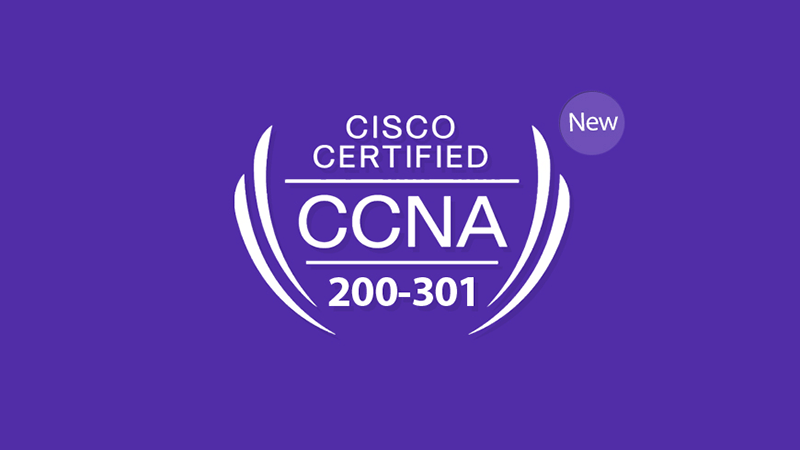
در حال حاضر میتوان به طور قطع گفت که شرکت سیسکو سیستمز (Cisco Systems) بزرگترین شرکت تولیدکننده تجهیزات شبکه است که در ابتدای کار با تولید دستگاه Router نقش بسیار زیادی در شکلگیری اینترنت در بین عموم مردم داشته است. در ابتدا این شرکت فقط دستگاه روتر تولید میکرد که وظیفه اصلی آن ارتباط بین شعب یک سازمان بود ولی امروزه محصولات متنوع دیگری از این شرکت در بازار کار موجود است که در مجموع میتوان دستگاههای Router ، Switch ، Firewall ، VOIP Gateway و … را نام برد. به عنوان مثال در شکل زیر یک دستگاه معروف سوییچ را میبینید که وظیفه اصلی آن برقراری شبکه در محیط یک ساختمان است و همچنین این دستگاه یکی از دستگاههای پرکاربرد در زیرساخت کشور ما است:
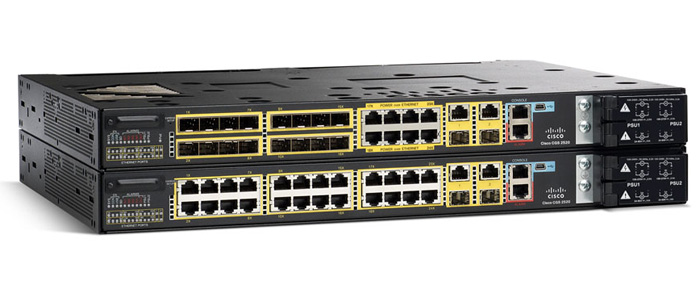
درواقع میتوان به جرات گفت تخصص در زمینه سیسکو به شما قدرت کار با کلیه تجهیزات شبکه حتی برندهای دیگر را میدهد بنابراین توصیه میشود، افرادی که میخواهند شاخه شبکه را بهصورت تخصصی ادامه دهند بهتر است از ابتدا وارد شاخههای آموزشی شرکت سیسکو شوند. سیسکو در ۱۵۰ کشور دنیا مرکزهای آموزشی به منظور تعلیم افراد برای طراحی و نگهداری شبکههای کامپیوتری تأسیس کرده است که درمجموع نقشه راه فعلی برای گذراندن دورههای تخصصی سیسکو به شرح زیر است:
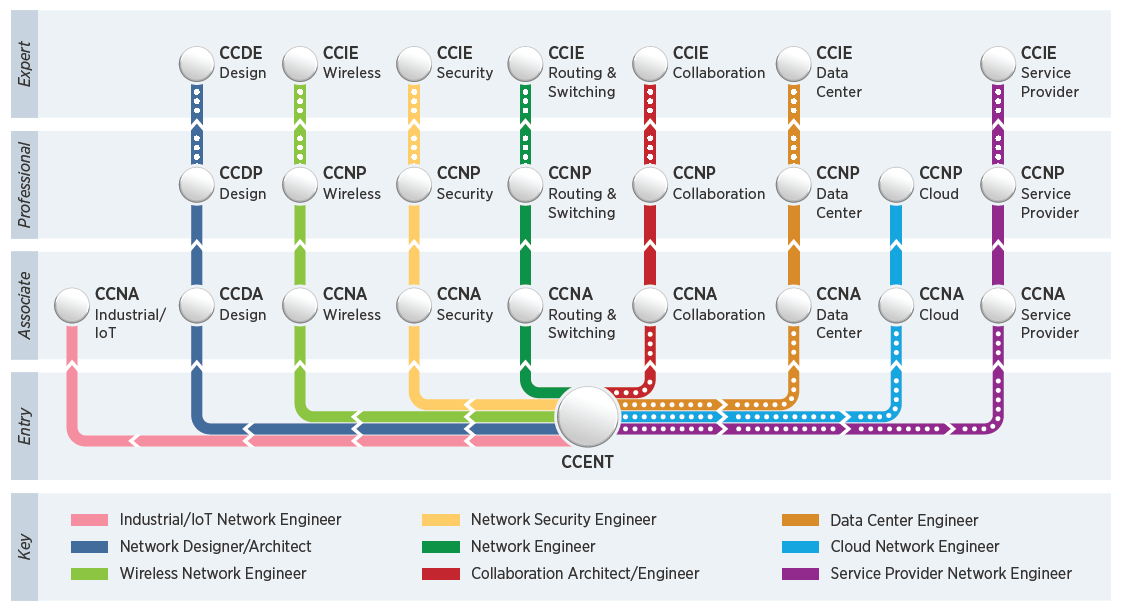
همانطور که در نقشه فوق میبینید سیسکو هرمهای آموزشی مختلفی دارد که معروفترین آنها در کل دنیا هرمهای Routing Switching و Security میباشند به عنوان مثال شما در هرم Routing Switching بهصورت تخصصی یاد میگیرد که با دستگاههای سوییچ و روتر شرکت سیسکو کارکنید که همانطور که میبینید در هر هرم سطحهای مختلفی مانند CCNA ، CCNP و CCIE وجود دارد که گذراندن این دورهها شما را در سطوح زیر قرار میدهد:

در مجموع دورههای آموزشی شرکت سیسکو به مباحث سختافزاری شبکههای کامپیوتری اشاره دارد که در این دورهها شما با تنظیمات دستگاههای شبکه مانند Router ، Switch ، Firewall و … آشنا میشوید. اولین دوره آموزشی شرکت سیسکو دوره CCNA نام دارد که پس از گذراندن این دوره میتوانید دورههای حرفهایتر سیسکو به نام CCNP را بگذرانید. گذراندن این دورهها شمارا قادر میسازد تا بهعنوان کارشناس شبکه در شرکتهای صنعتی و اداری بزرگ و همچنین شرکتهای خدمات اینترنتی مشغول به فعالیت شوید.
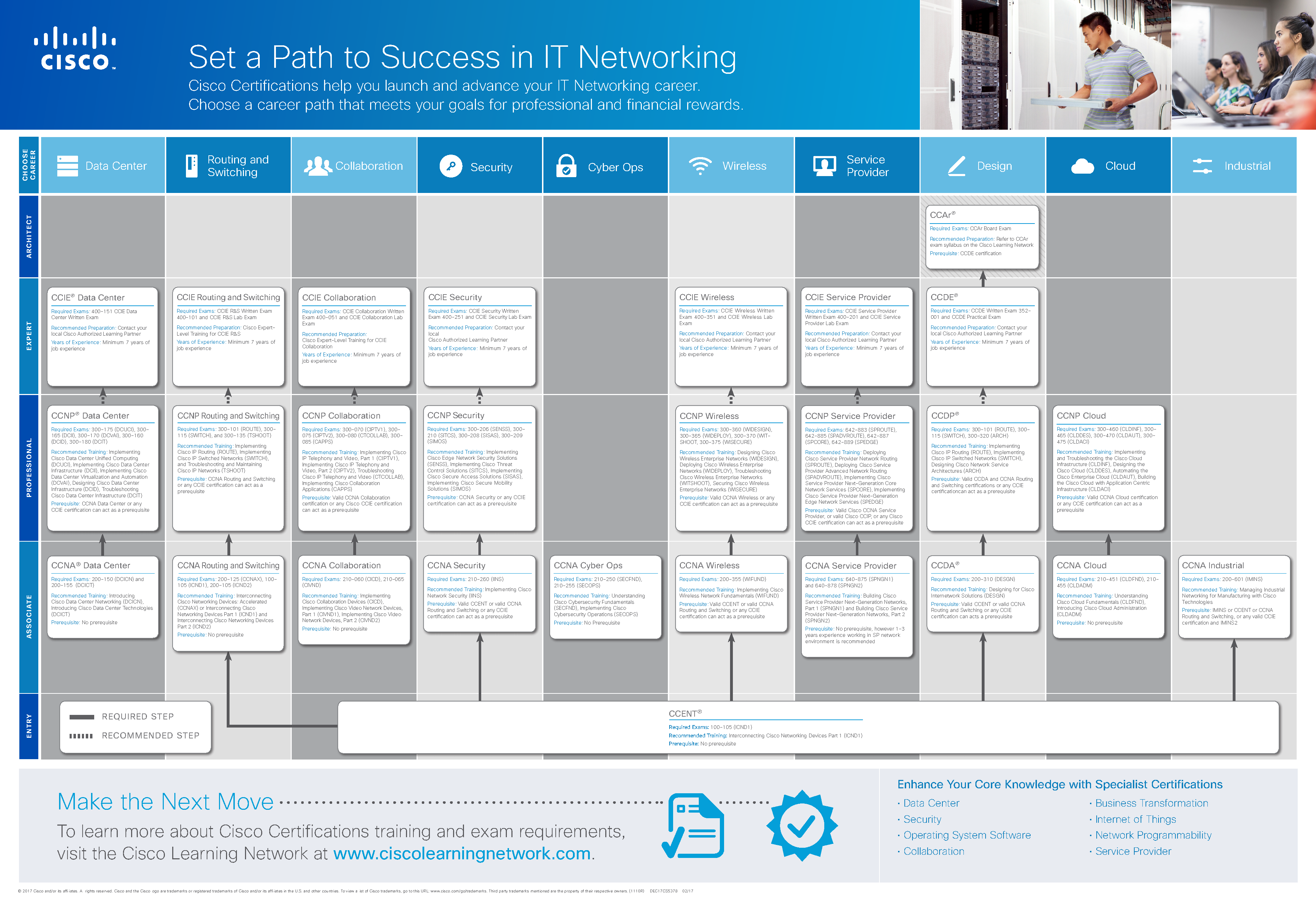
گواهینامههای سیسکو در پنج سطح ارائه میشوند:
- Entry
- Associate
- Professional
- Expert
- Architect
گواهینامههای سیسکو دارای نه گرایش مختلف هستند:
- Routing & Switching
- Design
- Network Security
- Service Provider
- Service Provider Operations
- Data Center Networking
- Voice
- Cloud
- Wireless
سطح Entry
سطح Entry با مدرک CCENT ابتدایی بوده و در ایران دورهای با این عنوان برگزار نمیشود در عوض مدرک +Network به عنوان پیش نیاز مهندسی شبکه سیسکو و مایکروسافت در ایران مورد توجه قرار داشته و معمولاً اولین دورهای است که متخصصان شبکه آن را می گذرانند! البته CCENT معادل +Network نبوده و سطح بالاتری دارد، CCENT را میتوان نیمی از راه مدرک CCNA دانست، کسی که CCNA دارد، به CCENT هم مسلط است!
سطح Architect
سطح Architect بالاترین سطح مدرک مهندسی شبکه در بین کلیه مدارک بینالمللی شبکه است، ظاهراً شرکت سیسکو با ارائهٔ این سطح خواسته تا برترین متخصصان بینالمللی شبکه را گلچین نماید، شاید بتوان (CCA (Cisco Certified Architect را به نوعی معادل فوق دکترای شبکه در گرایش Design (طراحی) دانست!
سطوح Associate و Professional و Expert
اما گذشته از سطح Entry و Architect سایر سطوح مدارک سیسکو گرایشهای مختلف مهندسی شبکه را پوشش می دهند، سه سطح Associate و Professional و Expert …
Associate یا دستیار، یعنی قرار گرفتن در ابتدای مسیر، گرایش شما هر چه که باشد می بایست پیش از اخذ هر مدرک یا گذراندن هر دوره ای، CCNA با گرایش Routing & Switching را بگذرانید! بعد از آن چنانچه خواستار تغییر گرایش از Routing & Switching به سایر گرایشها باشد، می بایست مدرک Associate ِ آن گرایش را نیز اخذ کنید، مثلاً چنانچه به Security علاقهمند هستید باید مدرک CCNA با گرایش Security را کسب کرده و سپس به سطح بالاتر یعنی Professional صعود نموده و CCSP را بگذرانید و نهایتاً مدرک سطح Expert یعنی CCIE با گرایش Security را اخذ کنید! البته اخذ این مدارک به خصوص مدارک سطح Expert کاری فوق العاده سنگین بوده و نیازمند تجربه کاری در حدود ۱۰ سال و تمرکز عمیق روی منابع مطالعاتی است!
معمولاً مدارک سطح Associate نظیر CCNA و CCDA را معادل کارشناسی شبکه
مدارک سطح Professional نظیر CCNP،CCSP و CCDP را معادل کارشناسی ارشد شبکه
و مدارک سطح Expert نظیر CCDE و CCIE با گرایشهای مختلف را معادل دکترای شبکه می دانند.
سطح Associate
این دوره زمینه آشنایی هر چه بیشتر شما با مفاهیم اصلی مربوط به شبکه یعنی نصب، پیکربندی و عملیاتی سازی روترها و سوئیچها را فراهم میسازد.
در صورتی که شما دوره آموزشی خود را در یک مرکز معتبر و تحت نظر اساتید حرفهای گذرانده باشید، پس از گذراندن این دوره به راحتی می توانید در آزمون بینالمللی Cisco شرکت کرده و مدرک بینالمللی آن را بدست آورید.
اغراق نیست اگر بگوییم که با اخذ مدرک بینالمللی CCNA، شما از لحاظ شروع کار با مشکلی روبرو نخواهید بود.
امروزه شرکتهای کوچک و متوسط و یا حتی شرکتهای دولتی نیز از محصولات Cisco استفاده میکنند و بدیهی است که وجود چنین شرایطی موجب به وجود آمدن فرصتهای شغلی بسیاری برای دارندگان مدرک CCNA چه در داخل و چه در خارج کشور شدهاست.
سیسکو از تاریخ Feb. 24, 2020 تمام مدارک CCNA خود را در یک CCNA جمع آوری می کند، که سرفصل های دوره جدید CCNA به صورت زیر می باشد:
Network Fundamentals
۱٫۱ Explain the role and function of network components
۱٫۱٫a Routers
۱٫۱٫b L2 and L3 switches
۱٫۱٫c Next-generation firewalls and IPS
۱٫۱٫d Access points
۱٫۱٫e Controllers (Cisco DNA Center and WLC)
۱٫۱٫f Endpoints
۱٫۱٫g Servers
1.2 Describe characteristics of network topology architectures
۱٫۲٫a 2 tier
۱٫۲٫b 3 tier
۱٫۲٫c Spine-leaf
۱٫۲٫d WAN
۱٫۲٫e Small office/home office (SOHO)
۱٫۲٫f On-premises and cloud
1.3 Compare physical interface and cabling types
۱٫۳٫a Single-mode fiber, multimode fiber, copper
۱٫۳٫b Connections (Ethernet shared media and point-to-point)
۱٫۳٫c Concepts of PoE
1.4 Identify interface and cable issues (collisions, errors, mismatch duplex, and/or speed)
1.5 Compare TCP to UDP
1.6 Configure and verify IPv4 addressing and subnetting
1.7 Describe the need for private IPv4 addressing
1.8 Configure and verify IPv6 addressing and prefix
1.9 Compare IPv6 address types
۱٫۹٫a Global unicast
۱٫۹٫b Unique local
۱٫۹٫c Link local
۱٫۹٫d Anycast
۱٫۹٫e Multicast
۱٫۹٫f Modified EUI 64
1.10 Verify IP parameters for Client OS (Windows, Mac OS, Linux)
1.11 Describe wireless principles
۱٫۱۱٫a Nonoverlapping Wi-Fi channels
۱٫۱۱٫b SSID
۱٫۱۱٫c RF
۱٫۱۱٫d Encryption
1.12 Explain virtualization fundamentals (virtual machines)
1.13 Describe switching concepts
۱٫۱۳٫a MAC learning and aging
۱٫۱۳٫b Frame switching
۱٫۱۳٫c Frame flooding
۱٫۱۳٫d MAC address table
Network Access
2.1 Configure and verify VLANs (normal range) spanning multiple switches
۲٫۱٫a Access ports (data and voice)
۲٫۱٫b Default VLAN
۲٫۱٫c Connectivity
2.2 Configure and verify interswitch connectivity
۲٫۲٫a Trunk ports
۲٫۲٫b 802.1Q
۲٫۲٫c Native VLAN
2.3 Configure and verify Layer 2 discovery protocols (Cisco Discovery Protocol and LLDP)
2.4 Configure and verify (Layer 2/Layer 3) EtherChannel (LACP)
2.5 Describe the need for and basic operations of Rapid PVST+ Spanning Tree Protocol and identify basic operations
۲٫۵٫a Root port, root bridge (primary/secondary), and other port names
۲٫۵٫b Port states (forwarding/blocking)
۲٫۵٫c PortFast benefits
2.6 Compare Cisco Wireless Architectures and AP modes
2.7 Describe physical infrastructure connections of WLAN components (AP,WLC, access/trunk ports, and LAG)
2.8 Describe AP and WLC management access connections (Telnet, SSH, HTTP,HTTPS, console, and TACACS+/RADIUS)
2.9 Configure the components of a wireless LAN access for client connectivity using GUI only such as WLAN creation, security settings, QoS profiles, and advanced WLAN settings
IP Connectivity
3.1 Interpret the components of routing table
۳٫۱٫a Routing protocol code
۳٫۱٫b Prefix
۳٫۱٫c Network mask
۳٫۱٫d Next hop
۳٫۱٫e Administrative distance
۳٫۱٫f Metric
۳٫۱٫g Gateway of last resort
3.2 Determine how a router makes a forwarding decision by default
۳٫۲٫a Longest match
۳٫۲٫b Administrative distance
۳٫۲٫c Routing protocol metric
3.3 Configure and verify IPv4 and IPv6 static routing
۳٫۳٫a Default route
۳٫۳٫b Network route
۳٫۳٫c Host route
۳٫۳٫d Floating static
3.4 Configure and verify single area OSPFv2
۳٫۴٫a Neighbor adjacencies
۳٫۴٫b Point-to-point
۳٫۴٫c Broadcast (DR/BDR selection)
۳٫۴٫d Router ID
3.5 Describe the purpose of first hop redundancy protocol
IP Services
4.1 Configure and verify inside source NAT using static and pools
4.2 Configure and verify NTP operating in a client and server mode
4.3 Explain the role of DHCP and DNS within the network
4.4 Explain the function of SNMP in network operations
4.5 Describe the use of syslog features including facilities and levels
4.6 Configure and verify DHCP client and relay
4.7 Explain the forwarding per-hop behavior (PHB) for QoS such as classification, marking, queuing, congestion, policing, shaping
4.8 Configure network devices for remote access using SSH
4.9 Describe the capabilities and function of TFTP/FTP in the network
Security Fundamentals
5.1 Define key security concepts (threats, vulnerabilities, exploits, and mitigation techniques)
5.2 Describe security program elements (user awareness, training, and physical access control)
5.3 Configure device access control using local passwords
5.4 Describe security password policies elements, such as management, complexity, and password alternatives (multifactor authentication, certificates, and biometrics)
5.5 Describe remote access and site-to-site VPNs
5.6 Configure and verify access control lists
5.7 Configure Layer 2 security features (DHCP snooping, dynamic ARP inspection, and port security)
5.8 Differentiate authentication, authorization, and accounting concepts
5.9 Describe wireless security protocols (WPA, WPA2, and WPA3)
5.10 Configure WLAN using WPA2 PSK using the GUI
Automation and Programmability
6.1 Explain how automation impacts network management
6.2 Compare traditional networks with controller-based networking
6.3 Describe controller-based and software defined architectures (overlay, underlay, and fabric)
۶٫۳٫a Separation of control plane and data plane
۶٫۳٫b North-bound and south-bound APIs
6.4 Compare traditional campus device management with Cisco DNA Center enabled device management
6.5 Describe characteristics of REST-based APIs (CRUD, HTTP verbs, and data encoding)
6.6 Recognize the capabilities of configuration management mechanisms Puppet, Chef, and Ansible
6.7 Interpret JSON encoded data
منبع مقاله: سایت https://nextadmin.net/

